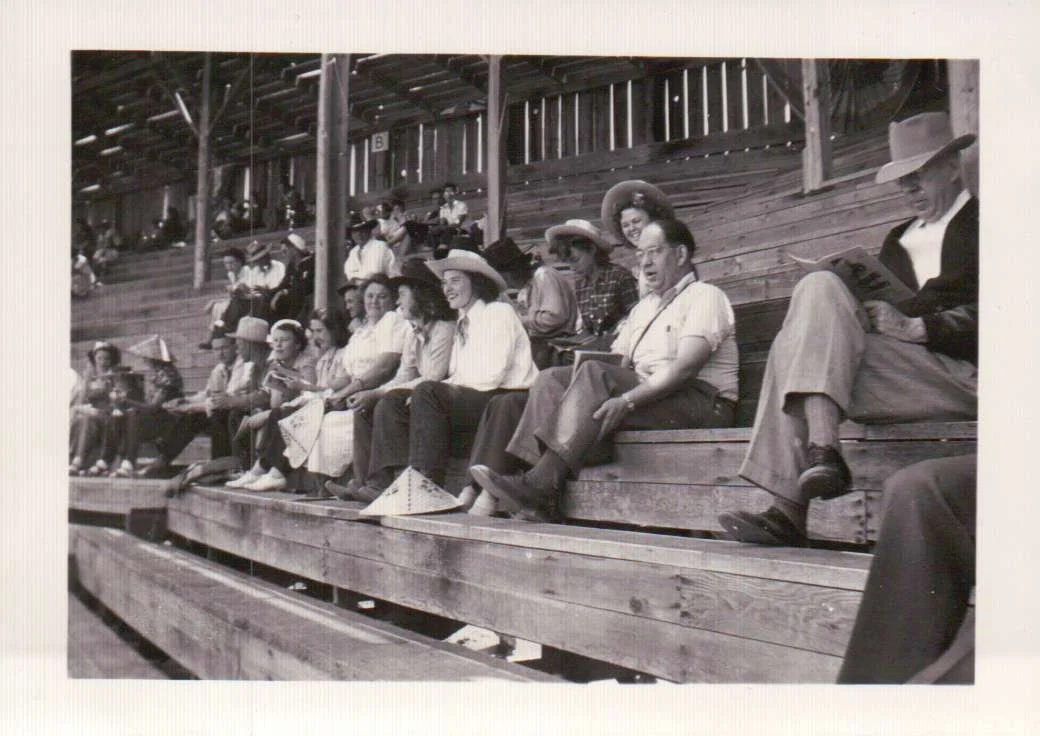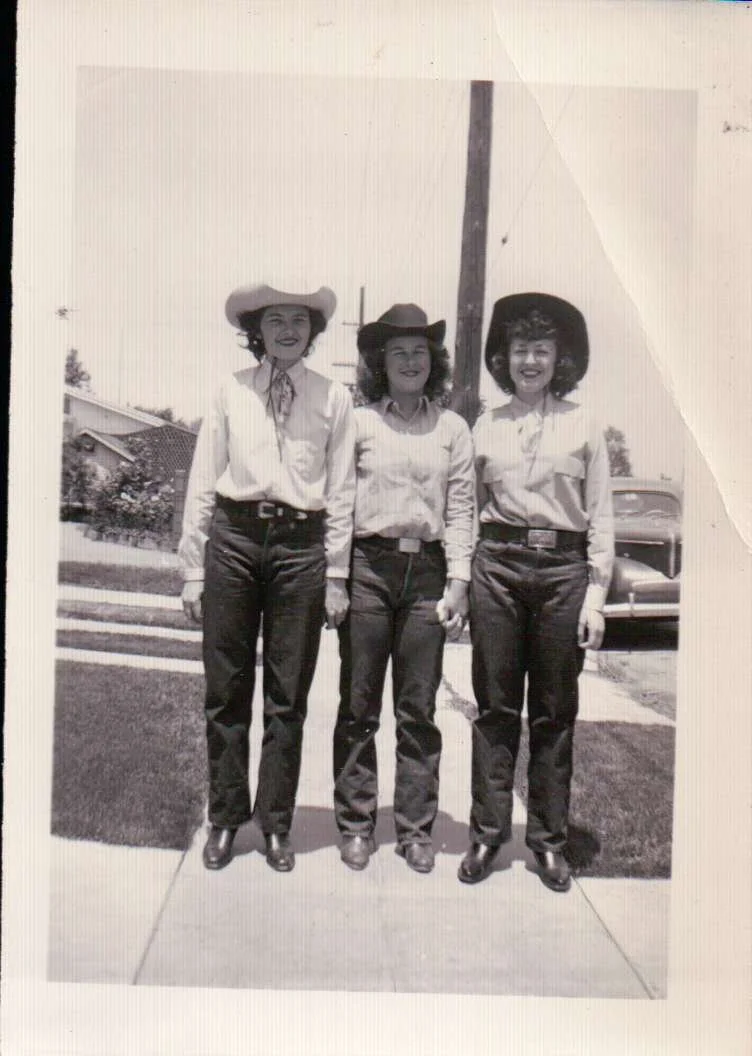The Value of a Book
On our recent heritage vacation for the three Morgan generations, all our
expectations were met and exceeded. We walked the paths of my great, great
grandfather in Morgan Territory, Alameda County. As we drove down the twisty two-
lane road and walked the fields to read the postings, I saw the road signs, the barn
with a Morgan name on it, the promise of an agricultural paradise. We had lunch in
amazing Healdsburg. Definitely changed from what I remember. Today it is quaint,
thriving, and intriguing; the seven-year-old girl in a 1947 Pontiac with no air
conditioning remembers the hot drive to get hay-press parts. What fun was that?
The Cooper houses, the Pereira vineyards, the Mathew corrals, and the Schultz barn
still stand along the three-mile drive down Feliz Creek Road in Hopland. It was a
four-mile drive “back when”, but we couldn’t get back there now. Back there to the
green alfalfa fields with white-board fences, the house we called home, the barn
with the big haymow and cows on one side and horses on the other. Nor could we
drive down to the dam on the creek where so many good times were had. Change
did come to Feliz Creek and the Hellman Ranch. Up to Mt. Shasta Snow Park where
snow still lays this year; Morgan was able to stand on a volcano. The house and
buildings on Big Springs Road are impressive; so happy someone is taking such
good care of it. The “ranch” on A12 still sits behind the cattle guard with
appreciative owners. It makes us, all three generations, feel good.
The tour through Lake Shastina with its houses and golf course gives no hint of the days we
spent herding and caring for the herd on those lands, but we remembered and my granddaughter,
Morgan, learned. And we did something not ranch-oriented or ever done by us
before: we took the Shasta Caverns Tour. We all are multi-faceted, curious learners
who search for new knowledge and experiences. Each one of us is so much more
than a cowgirl or a horseman. We walk many paths in this world. It was so worth
the time.
It is with these memories, this heritage, that the need to document the lifestyle was
so apparent. And thus One Man’s Opinion and One Man’s Collection were written
and published. Now we are on the brink of holding in our hands, absorbing every
word and picture of the new Heritage Editions of both books. They fill in the blanks,
they tell a more complete story of the rich opportunities of a California pioneering
family living what they thought was an everyday life.
Part of the trip was to visit Livermore. That is where Mom was born and raised; we
visited that road too. Immediately Wente and Concannon wineries stood proud and
tall, along with many new wine ventures. We saw the site of the stinky pig farm that
greeted us every day as we bused to school or town. The grove of eucalyptus
where Mom and her brothers drove the horse and buggy to school alerts us to the
sharp turn in the road. The lane where my first boyfriend lived is more shaded by
the long-ago planted trees. Morgan liked the story about Greenville Road with the 7
Sisters that we called the uppy-downs; the Sisters are gone now. Then there were
the ranches where some of our bits originated: the Moys, the Browns, the
Fellinghams, the Castros. All great memories, many included in the new Heritage
Editions.
Baughman’s is part of that cowboy lore of Livermore; we had to go into that famed
store. This is where Mom and Dad shopped along with Johnie Schneider, Doc Root,
the Mulqueenies, Vern Castro, and many others for many decades. Sitting on the
counter by the cash register was a book that caught my eye: 100 Years of the
Livermore Rodeo—a definite coffee table book with a treasure trove of history. Not
included in the book is that this is where Mom and Dad met with the Gerbers, the
McCumbers, and family friends. But it did tell me that Livermore had the first Kids’
Parade in 1931. We lived in Livermore in 1958 and 59. We didn’t go to the rodeo; I
always wondered why not. The book told me. The bleachers were condemned just
weeks before the big event. There was no rodeo to see that year. It is comforting
to see all the recorded history that a book can protect and keep authentic and
unaltered. Repeatedly now, I have gone through that Livermore book to relive
stories told and people known. I can only hope that you feel the same way about
the Heritage Editions that you will thumb through soon.
Today our resources, our theories, and our world are so much bigger. There are so
many choices about everything that touches us. We truly need to be informed so
we can make our best decisions, be it about our diet, our medical, or our horses for
example. Life is zooming; the slow pace is a luxury not all can afford. We need our
information now, and we need it authenticated. Many of us have mentors, teachers,
and elders who can help guide us, just as in previous decades and centuries. That, I
hope, will never end. The internet with all its iterations is ever-present for our
edification. It gives us information that we may not even thought about. And the
actual cost is minimal. The print matter (books, magazines, papers, even catalogs)
has been a mainstay for many of us. They sit on our shelves, they’re in the
libraries, they can also be found on the internet. Our choices of information sources
are growing as is our world.
Our vast amount of recorded history, philosophical musings, proven theories, and
fanciful storytelling are available online. It is really like the world is at our fingertips
for anything we want to know. I sit at the desk or relax in the family room, open the
computer or the phone, turn it on and wait for it to load, enter the keywords, and
glean through the multitude of options that my server thinks I might want. Then I
choose screen upon screen to reminisce, to verify, or to learn. It is informative, but
you are always on alert for authenticity, and don’t spill your coffee or other on that
technology.
Or... for those special interest topics, I can pull a book from the bookcase, relax in a
comfortable chair or carry it to the tack room. It doesn’t require electricity or
internet. Feel the warm touch of the cloth or leather, open the book, and page
through idea after idea, memory upon memory. I am taken back or moved into the
future in these books of infinite possibilities with sources and visuals verified and
lived. They also stay right where I put them time after time.
I am a baby boomer; I was raised with these books. Would that we can teach future generations to
appreciate them and their power too. I like the invitation upon opening the cover
to move into the book. The feel of the paper as you turn page by page is so
smooth. The pictures illustrate and preserve for future generations the lifestyle in
context (I see some great bucking pictures with primitive arenas and bleachers in that Livermore book. I didn’t even think of the likelihood that there were not always
bucking chutes either.) It is the full development of an idea rather than headlines
with a short sentence or two. The Heritage Editions are that invitation; as you open
the cover the reader is welcomed to ride into the book page by page. You are
transferred into the mid-century, asking how you might apply that lifestyle to
today’s world. It is a time to inform and move on or to slow down and think of the
possibilities. You really shouldn’t spill your coffee here too.
Yes, the world is bigger now, our interests are varied, and time is precious. We want
to know as much as we can to live the best life possible. There is a time, place, and
purpose for all forms of information. I love to talk with fellow participants about
horses, spade bits, and even cooking or Spain. I will turn on the computer and wait
for it to load to look up a nugget of information, to refine my photography, or to
write a couple of books. I really enjoy opening the cover of that book, accepting the
invitation to enter, and immerse myself in a world to think about and to enjoy. I
invite you to do that with Heritage Edition of One Man’s Collection and soon Heritage Edition of One Man’s Opinion.




